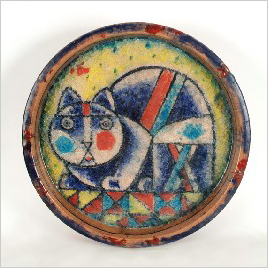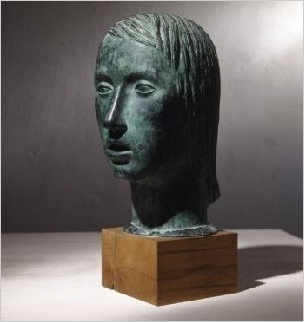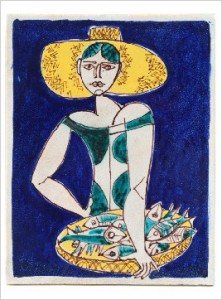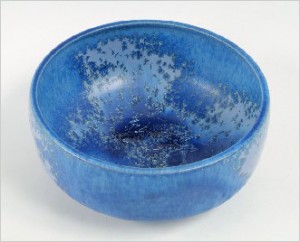September 2-30, 2010
Urbino – Italy
 Celebrated as one of the most important Italian artist of the 20th century, Guerrino Tramonti was a a ceramicists, a sculptor and a painter.
Celebrated as one of the most important Italian artist of the 20th century, Guerrino Tramonti was a a ceramicists, a sculptor and a painter.
This retrospective exhibition displays more than 60 ceramics made between 1930 and 1970, the highest peak of Tramonti’s artistic production.
The terracotta sculptures, ceramics, and stoneware on display in Urbino show the strong personality of a man who always interpreted his time with a powerful, Mediterranean modernity. He won his first prize at sixteen and since then he never stopped exploring new trends and new techniques, with enthusiasm and talent.
He had already won many prizes with his works, this allowing him to be immediately welcomed in the artistic environment of the capital.
 Between the Thirties and the Forties he was influenced by Arturo Martini and the “archeological” nostalgia, especially for Etruscan art.
Between the Thirties and the Forties he was influenced by Arturo Martini and the “archeological” nostalgia, especially for Etruscan art.
After World War II he observed the work of Riccardo Gatti and Pietro Melandri in Faenza, who were very much into lusterware. He soon gave his own interpretation of this sophisticated technique, while creating also some outstanding majolicas covered in thick glazes.
His primitive designs and shapes and his simple color palette – yellow, red, white and pale blue – were certainly a tribute to Guido Gambone, whom he considered to be the best ceramicist of his century.
In the Fifties he was appointed Director of the Art Institute in Castelli, Abruzzo.  Here he started experimenting with his students and fellow artists and came up with “The third ceiling of San Donato” a 100 square meter large ceiling made of 265 large ceramic tiles, a modern tribute to the “ceramic Sistine Chapel” of the little chuch of San Donato in Castelli.
Here he started experimenting with his students and fellow artists and came up with “The third ceiling of San Donato” a 100 square meter large ceiling made of 265 large ceramic tiles, a modern tribute to the “ceramic Sistine Chapel” of the little chuch of San Donato in Castelli.
His decorative disks also belong to this artistic phase. He complemented his taste for archaism, with the lessons of Picasso, Braque and Catalan medieval painting, as well described by Prof. G.C. Bojani, curator of the exhibition and author of the catalogue. Tramonti canceled the perspective from his circular shapes and chose to break the unity of the images thru the use of crackle finishes, technical initiatives that became his aesthetic signature.
 His last ceramics are dominated by Far Eastern influences. China, Japan and Korea offered their cultural hints, that Tramonti filtered with the formal purism that was very popular in the Sixties and Seventies. He worked very much with stoneware, that better fit his need to “sculpt” his ideas.
His last ceramics are dominated by Far Eastern influences. China, Japan and Korea offered their cultural hints, that Tramonti filtered with the formal purism that was very popular in the Sixties and Seventies. He worked very much with stoneware, that better fit his need to “sculpt” his ideas.
Tramonti stopped making pottery at the end of the Seventies because he thought that he “couldn’t do better than that”. He painted instead, changing the medium, but certainly not his power of expression. A small collection of his paintings on display at the exhibition offers a positive comparison between the different and complementary mediums used by this great artist.
Guerrino Tramonti. Ceramiche in terra d’Urbino, 1930-1970
Casa natale di Raffaello – Bottega Giovanni Santi
Via Raffaello 57
Hours:
Monday to Saturday – 9 am to 12.30 pm – 3 pm to 6:30 pm.
Sunday 10 am to 12.30 am
Ph: 0039 0722 320105
Additional info on the artist: www.tramontiguerrino.it

I cannot find an image of a black striped decanter with cork cover with the words Vod- Ka on either side of the mouth..made in the 1970’s by Franco Pozzi.. Ceramica Gallerate..it seems to be part of a bar set..as I see others with different geometric designs..and a coffee pot with black & white stripes but no decanter..can you assist?
I would be grateful!
T